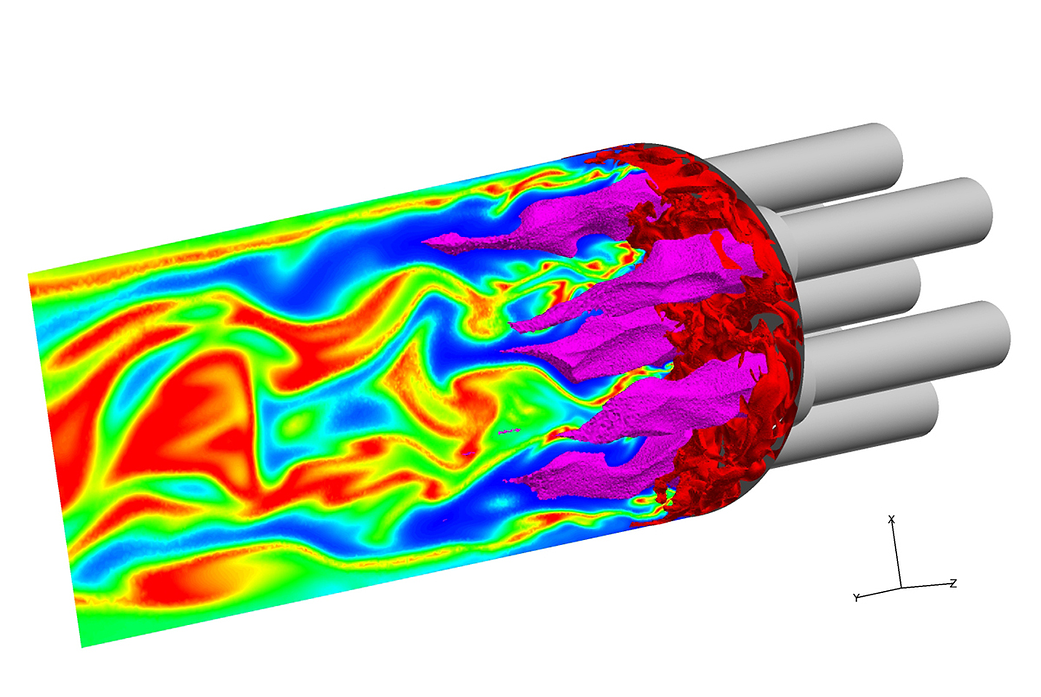Engineers at NASA’s Marshall Space Flight Center in Huntsville, Alabama, are designing rocket engines for the Space Launch System (SLS), the new heavy-lift launch vehicle that will take crewed exploration missions beyond low Earth orbit. As part of that effort, SLS Advanced Booster (AB) concepts are being developed to replace the solid rocket boosters that were used with the space shuttle. Computational fluid dynamics (CFD) modeling is an important tool in the SLS AB injector design process.
In this visualization, isosurfaces of the fuel (red) and oxygen (magenta) are shown entering the combustion chamber, with red representing 100% fuel and magenta representing 100% oxygen. The fuel and oxidizer mix and burn, releasing combustion products downstream of the injectors. The simulation was run across thousands of processors on the Pleiades supercomputer at the NASA Advanced Supercomputing facility at NASA’s Ames Research Center in Moffett Field, California.
Simulation results provided greater amounts of higher-fidelity data than would have been possible using traditional sub-scale hot fire testing—potentially helping NASA lower the cost of access to space by reducing reliance on costly full-scale hot fire testing. The data has been used to significantly augment and improve the empirical design tools, resulting in a high-performance, stable injector design.
Image Credit: Brian Richardson, Douglas Westra, NASA/Marshall
Related: NASA is showcasing more than 35 of the agency’s exciting computational achievements at SC14, the international supercomputing conference, Nov. 16-21, 2014 in New Orleans.



























